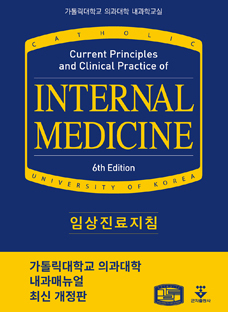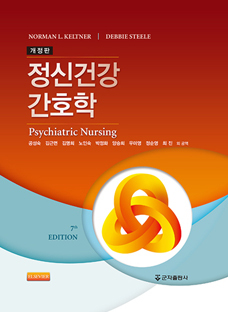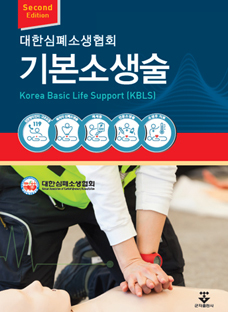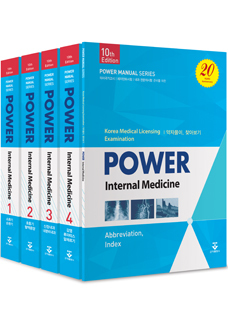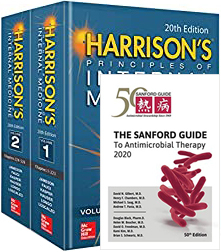Cameron and Cameron: Current Surgical Therapy, 13th edition
Section 1. Esophagus
1. Esophageal Function Tests
2. Gastroesophageal Reflux Disease
3. New Approaches to Gastroesophageal Reflux Disease (LINX)
4. The Management of Barrett`s Esophagus
5. The Endoscopic Treatment of Barrett`s Esophagus
6. The Management of Paraesophageal Hiatal Hernia
7. The Management of Pharyngeal Esophageal (Zenker`s) Diverticula
8. The Management of Achalasia of the Esophagus
9. The Management of Disorders of Esophageal Motility
10. The Management of Esophageal Carcinoma
11. Neoadjuvant and Adjuvant Therapy of Esophageal Cancer
12. The Use of Esophageal Stents
13. The Management of Esophageal Perforation
Section 2. Stomach
14. The Management of Benign Gastric Ulcer
15. The Management of Duodenal Ulcers
16. The Management of the Zollinger-Ellison Syndrome
17. The Management of the Mallory-Weiss Syndrome
18. The Management of Gastric Adenocarcinoma
19. Familial Gastric Cancer
20. The Management of Gastrointestinal Stromal Tumors
21. The Management of Morbid Obesity
Section 3. Small Bowel
22. The Management of Small Bowel Obstruction
23. The Management of Crohn`s Disease of the Small Bowel
24. The Use of Strictureplasty in Crohn`s Disease
25. The Management of Small Bowel Tumors
26. The Management of Diverticulosis of the Small Bowel
27. The Management of Motility Disorders of the Stomach and Small Bowel
28. The Management of Short Bowel Syndrome
29. The Management of Enterocutaneous Fistulas
Section 4. Large Bowel
30. Preoperative Bowel Preparation: Is it Necessary?
31. The Management of Diverticular Disease of the Colon
32. The Management of Chronic Ulcerative Colitis
33. The Management of Toxic Megacolon
34. The Management of Crohn`s Colitis
35. The Management of Ischemic Colitis
36. The Management of Clostridium Difficile Colitis
37. The Management of Large Bowel Obstruction
38. Enteral Stents in the Treatment of Colonic Obstruction
39. The Management of Acute Colonic Pseudo-Obstruction (Ogilvie`s Syndrome)
40. The Management of Colonic Volvulus
41. The Management of Rectal Prolapse
42. The Management of Solitary Rectal Ulcer Syndrome
43. The Surgical Management of Constipation
44. The Management of Radiation Injury to the Small and Large Bowel
45. Surgical Management of the Polyposis Syndromes
46. The Management of Colon Cancer
47. The Management of Rectal Cancer
48. The Management of Tumors of the Anal Region
49. The Use of PET Scanning in The Management of Colorectal Cancer
50. Neoadjuvant and Adjuvant Treatment for Colorectal Cancer
51. The Management of Colon Polyps
52. Management of Peritoneal Surface Malignancies
53. The Management of Acute Appendicitis
54. The Management of Hemorrhoids
55. Diagnosis, Treatment, and Surgical Management of Fissures-in-ano
56. The Management of Anorectal Abscess and Fistula
57. The Management of Anorectal Stricture
58. The Management of Pruritus Ani
59. The Management of Fecal Incontinence
60. The Management of Rectovaginal Fistula
61. The Management of Condyloma Acuminata
62. The Management of Pilonidal Disease
63. The Management of Lower Gastrointestinal Bleeding
64. Enhanced Recovery After Surgery
65. Pneumatosis Intestinalis and the Importance for the Surgeon
Section 5. The Liver
66. The Management of Cystic Disease of the Liver
67. The Management of Echinococcal Cyst Disease of the Liver
68. The Management of Liver Hemangioma
69. The Management of Benign Liver Lesions
70. The Management of Malignant Liver Tumors
71. Hepatic Malignancy: Resection versus Transplantation
72. Ablation of Colorectal Liver Metastases
73. The Management of Hepatic Abscess
74. Transarterial Chemoembolization for Liver Metastases
Section 6. Portal Hypertension
75. Portal Hypertension: The Role of Shunting Procedures
76. The Role of Liver Transplantation in Portal Hypertension
77. Endoscopic Therapy for Esophageal Variceal Hemorrhage
78. Transjugular Intrahepatic Portosystemic Shunt
79. The Management of Refractory Ascites
80. The Management of Hepatic Encephalopathy
81. The Management of Budd-Chiari Syndrome
Section 7. Gallbladder and Biliary Tree
82. The Management of Asymptomatic (Silent) Gallstones
83. The Management of Acute Cholecystitis
84. Proper Use of Cholecystostomy Tubes
85. The Management of Common Bile Duct Stones
86. The Management of Acute Cholangitis
87. The Management of Benign Biliary Strictures
88. The Management of Cystic Disorders of the Bile Ducts
89. The Management of Primary Sclerosing Cholangitis
90. The Management of Intrahepatic, Hilar, and Distal Cholangiocarcinomas
91. The Management of Gallbladder Cancer
92. The Management of Gallstone Ileus
93. Transhepatic Interventions for Obstructive Jaundice
94. Obstructive Jaundice: Endoscopic Therapy
Section 8. Pancreas
95. The Management of Acute Pancreatitis
96. The Management of Gallstone Pancreatitis
97. Pancreas Divisum and Other Variants of Dominant Dorsal Duct Anatomy
98. The Management of Pancreatic Necrosis
99. The Management of Pancreatic Pseudocyst
100. Pancreatic Ductal Disruptions Leading to Pancreatic Fistula, Pancreatic Ascites, or Pancreatic Pleural Effusion
101. The Management of Chronic Pancreatitis
102. The Management of Periampullary Cancer
103. Vascular Reconstruction During the Whipple Operation
104. Palliative Therapy for Pancreatic Cancer
105. Neoadjuvant and Adjuvant Therapy for Pancreatic Cancer
106. Unusual Pancreatic Tumors
107. Intraductal Papillary Mucinous Neoplasms of the Pancreas
108. The Management of Pancreatic Islet Cell Tumors Excluding Gastrinoma
109. Intraoperative Radiation for Pancreatic Malignancies
110. Transplantation of the Pancreas
111. Islet Allotransplantation for Diabetes
112. Islet Autotransplantation for Chronic Pancreatitis
Section 9. Spleen
113. Splenectomy for Hematologic Diseases
114. The Management of Cysts, Tumors, and Abscesses of the Spleen
115. Splenic Salvage Procedures: Therapeutic Options
Section 10. Hernia
116. The Management of Inguinal Hernia
117. The Management of Recurrent Inguinal Hernia
118. Incisional, Epigastric, and Umbilical Hernias
119. The Management of Spigelian, Lumbar, and Obturator Herniation
120. Athletic Pubalgia: The Sports Hernia
121. Abdominal Wall Reconstruction
Section 11. The Breast
122. The Management of Benign Breast Disease
123. Screening For Breast Cancer
124. The Role of Stereotactic Breast Biopsy in the Management of Breast Disease
125. Molecular Targets in Breast Cancer
126. Breast Cancer: Surgical Therapy
127. Ablative Techniques in the Treatment of Benign and Malignant Breast Disease
128. Lymphatic Mapping and Sentinel Lymphadenectomy
129. The Management of the Axilla in Breast Cancer
130. Inflammatory Breast Cancer
131. Ductal and Lobular Carcinoma in Situ of the Breast
132. Advances in Neoadjuvant and Adjuvant Therapy for Breast Cancer
133. The Management of Recurrent and Disseminated Breast Cancer
134. The Management of Male Breast Cancer
135. Breast Imaging
136. Genetic Counseling and Testing
137. Contralateral Prophylactic Mastectomy
138. Margins: How To and How Big?
139. Breast Reconstruction Following Mastectomy: Indications, Techniques, and Results
Section 12. Endocrine Glands
140. Adrenal Incidentaloma
141. The Management of Adrenal Cortical Tumors
142. The Management of Pheochromocytoma
143. The Management of Thyroid Nodules
144. The Management of Nontoxic Goiter
145. The Management of Thyroiditis
146. The Management of Hyperthyroidism
147. Surgical Approach to Thyroid Cancer
148. The Management of Primary Hyperparathyroidism
149. Persistent or Recurrent Hyperparathyroidism
150. Secondary and Tertiary Hyperparathyroidism
151. Metabolic Changes Following Bariatric Surgery
152. Glycemic Control and Cardiovascular Disease Risk Reduction After Bariatric Surgery
Section 13. Skin and Soft Tissue
153. Nonmelanoma Skin Cancers
154. The Management of Cutaneous Melanoma
155. The Management of Soft Tissue Sarcoma
156. The Management of Solitary Neck Mass
157. Hand Infections
158. Nerve Injury and Repair
159. Gas Gangrene of the Extremity
160. Necrotizing Skin and Soft Tissue Infections
Section 14. Chest Wall, Mediastinum, and Trachea
161. The Management of Primary Chest Wall Tumors
162. Mediastinal Masses
163. Primary Tumors of the Thymus
164. The Management of Tracheal Stenosis
165. The Management of Acquired Esophageal Respiratory Tract Fistula
166. Congenital Chest Wall Deformities
Section 15. Vascular Surgery
167. Open Repair of Abdominal Aortic Aneurysms
168. Endovascular Treatment of Abdominal Aortic Aneurysm
169. The Management of Ruptured Abdominal Aortic Aneurysm
170. Abdominal Aortic Aneurysm and Unexpected Abdominal Pathology
171. The Management of Thoracic and Thoracoabdominal Aortic Aneurysms
172. The Management of Acute Aortic Dissections
173. Carotid Endarterectomy
174. The Management of Recurrent Carotid Artery Stenosis
175. Balloon Angioplasty and Stents in Carotid Artery Occlusive Disease
176. The Management of Aneurysms of the Extracranial Carotid and Vertebral Arteries
177. Brachiocephalic Reconstruction
178. The Management of Upper Extremity Arterial Occlusive Disease
179. The Management of Aortoiliac Occlusive Disease
180. The Management of Femoropopliteal Occlusive Disease
181. The Management of Tibioperoneal Arterial Occlusive Disease
182. Profunda Femoris Reconstruction
183. The Management of Femoral and Popliteal Artery Aneurysms
184. The Treatment of Claudication
185. The Management of Pseudoaneurysms and Arteriovenous Fistulas
186. AxilloBiFemoral Bypass Grafting in the 21st Century
187. The Management of Peripheral Arterial Embolism
188. Acute Peripheral Arterial and Bypass Graft Occlusion: Thrombolytic Therapy
189. The Management of Infected Grafts
190. Atherosclerotic Renovascular Disease
191. Raynaud Syndrome
192. Thoracic Outlet Syndromes
193. The Diabetic Foot
194. Gangrene of the Foot
195. Buerger`s Disease (Thromboangiitis Obliterans)
196. Acute Mesenteric Ischemia
197. Chronic Mesenteric Ischemia
198. Hemodialysis Access Surgery
199. Venous Thromboembolism: Prevention, Diagnosis, and Treatment
200. Vena Cava Filters
201. The Treatment of Varicose Veins
202. Lymphedema
203. The Management of Lower Extremity Amputations
Section 16. Trauma and Emergency Care
204. Initial Assessment and Resuscitation of the Trauma Patient
205. Pre-Hospital Management of the Trauma Patient
206. The Use of REBOA in Resuscitation of the Trauma Patient
207. Airway Management in the Trauma Patient
208. The Surgeon`s Use of Ultrasound in Thoracoabdominal Trauma
209. Emergency Department Thoracotomy
210. The Management of Traumatic Brain Injury
211. Chest Wall Trauma, Pneumothorax, and Hemothorax
212. Blunt Abdominal Trauma
213. Penetrating Abdominal Trauma
214. The Management of Diaphragmatic Injuries
215. The Management of Liver Injuries
216. Pancreatic and Duodenal Injuries
217. Injuries to the Small and Large Bowel
218. The Management of Rectal Injuries
219. Injury to the Spleen
220. Retroperitoneal Injuries: Kidney and Ureter
221. Damage Control Operation
222. Pelvic Fractures
223. Urologic Complications of Pelvic Fracture
224. Spine and Spinal Cord Injuries
225. Evaluation and Management of the Patient with Craniomaxillofacial Trauma
226. Penetrating Neck Trauma
227. Blunt Cardiac Injury
228. Abdominal Compartment Syndrome and Management of the Open Abdomen
229. Coagulation Issues and the Trauma Patient
230. The Abdomen That Will Not Close
231. The Management of Vascular Injuries
232. Endovascular Management of Vascular Injuries
233. The Management of Extremity Compartment Syndrome
234. Burn Wound Management
235. Medical Management of the Burn Patient
236. The Management of Frostbite, Hypothermia, and Cold Injuries
237. Electrical and Lightning Injuries
Section 17. Preoperative and Postoperative Care
238. Fluid and Electrolyte Therapy
239. Preoperative Assessment of the Elderly Patient: Frailty
240. Preoperative Preparation of the Surgical Patient
241. Is a Nasogastric Tube Necessary After Alimentary Tract Surgery?
242. Surgical Site Infections
243. The Management of Intraabdominal Infections
244. Occupational Exposure to Human Immunodeficiency Virus and Other Bloodborne Pathogens
245. Antifungal Therapy in the Surgical Patient
246. The Use of Narcotics in the Postoperative Period
Section 18. Surgical Critical Care
247. Surgical Palliative Care
248. Cardiovascular Pharmacology
249. Glucose Control in the Postoperative Period
250. Postoperative Respiratory Failure
251. Ventilator-Associated Pneumonia
252. Extracorporeal Life Support for Respiratory Failure
253. Tracheostomy
254. Acute Kidney Injury in the Injured and Critically Ill
255. Electrolyte Disorders
256. Acid-Base Problems
257. Catheter Sepsis in the Intensive Care Unit
258. The Septic Response
259. Multiple Organ Dysfunction and Failure
260. Antibiotics for Critically Ill Patients
261. Endocrine Changes in Critical Illness
262. Nutrition Therapy in Critical Illness
263. Coagulopathy in the Critically Ill Patient
